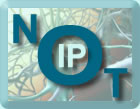



Scoliosis is a condition involving the lateral (sideways) bending of the spine, which has and continues to perplex health care practitioners in both the allopathic and alternative medical models. The present knowledge base of scoliosis discusses statistics of occurrence, age, gender and relates causative factors as idiopathic (of unknown cause). Generally, most practitioners approach scoliosis in a conservative fashion comprised of observation, periodic spinal x-rays, exercises, and stretches, …sometimes progressing to bracing and surgery.
Kinesiological and functional neurology interpretations look at scoliosis in a different light.
It has been my training and belief that nothing happens at random in the human body. It is human nature to survive. Thus, our nervous system will always take what action it believes necessary to maximize survivability. It is with this interpretation that one must first take the position that scoliosis must be a compensatory state allowing for improved survivability.
To investigate this theory, let’s look at the muscular activity and spinal distortion seen in scoliosis as a functional survival compensation relating to the centering/balancing system of our nervous system.
When we walk or run our spine will actually move thru a complex 'scoliosis type' twisting/bending movement to accommodate our gait movements of arm and leg swing. In the individual with scoliosis there is a failure to return the body to a neutral walking gait. With either a right or left step-position and opposite arm swing, the nervous system will attempt to maintain symmetry and balance by making the back muscles and spine accommodate in a compensatory twisting posture with the primary purpose to keep the head/eyes looking forward.
The scoliosis posture is necessary to maintain balance and should not be misinterpreted as “illness or disease”! This is the best your body can do right now but it can do better!
Now let’s take this theory one step further. If the nervous system controls all muscular action, then somewhere there must be a neural processing deficit, a software glitch, responsible for scoliosis.
In the late 1970’s, Dr. Corwin’s mentor, a Brooklyn chiropractor named Dr. Carl Ferreri D.C., Ph.C., attempted to solve this mystery and uncovered a vital link in the understanding of scoliosis. He discovered several commonalities relating to the scoliotic adolescent:
1. The gait muscles involved in arm swing would show a predictable pattern of
The gait muscles involved in arm swing would show a predictable pattern of
facilitation and defacilitation unique to the condition of scoliosis.
2. A walking stride length discrepancy can be measured that would be
A walking stride length discrepancy can be measured that would be
concomitant and directly proportional to the severity of the scoliosis.
3. A balance problem involving the vestibular (inner ear) system.
A balance problem involving the vestibular (inner ear) system.
4. A visual field deficit will exist opposite the side of the scoliosis.
A visual field deficit will exist opposite the side of the scoliosis.
5. For the bending type scoliosis to develop, a triggering event (physical, chemical,
For the bending type scoliosis to develop, a triggering event (physical, chemical,
or emotional) coinciding with the reproductive system becoming active
(puberty) is required.
6. There is a known, but poorly understood link between scoliosis and learning
There is a known, but poorly understood link between scoliosis and learning
disabilities with the vestibulo-ocular reflex deficit being an obvious primary
link.
7. This vestibulo-ocular reflex, when present, can significantly contribute to the
This vestibulo-ocular reflex, when present, can significantly contribute to the
slowed response of the usual and customary care provided in injuries such as
lower back pain, neck, shoulder and knee problems and more.
Successful treatment outcome of the condition of scoliosis is two-fold:
First address the causative factors (neurological deficits):
• Aberrant centering reflexes of the head and pelvis.
Aberrant centering reflexes of the head and pelvis.
• Recalibration of the vestibular-ocular component of the balance mechanisms of
Recalibration of the vestibular-ocular component of the balance mechanisms of
the inner ear controlling eye muscle movement. These primitive reflexes are
part of our autonomic nervous system and can be evaluated at any age.
• Once the body’s primitive centering reflexes become stabilized, then the need
Once the body’s primitive centering reflexes become stabilized, then the need
for scoliosis (the compensatory adaptive reactive muscle imbalances) is
eliminated. The facilitated (tight) spinal muscles responsible for the bending of
the spine during the adolescent growth spurt will now relax and respond to
care. This procedure is easy to implement and has a very low recidivism rate.
Second step involves retraining:
• There are multiple modalities and practitioners available from a variety of
There are multiple modalities and practitioners available from a variety of
methodologies. The theme is releasing poor postural habits by teaching greater
self-awareness in movement. Yoga, Alexander Method, Trager work to name a
few.
• Exercise is essential. Find a symmetrical sport activity. This is the fun part of
Exercise is essential. Find a symmetrical sport activity. This is the fun part of
self-care.
If addressed before the growth cycle ends, the spinal distortion can reshape and potentially disappear. If correction is done after puberty, then the spinal distortion will stop and not progress. If the centering reflexes are addressed before puberty, then the potential for developing scoliosis is eliminated.
Scoliosis
Can it be prevented
and
what can I do if I already have scoliosis?
